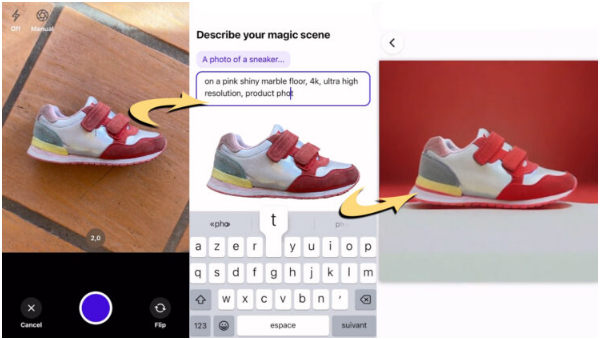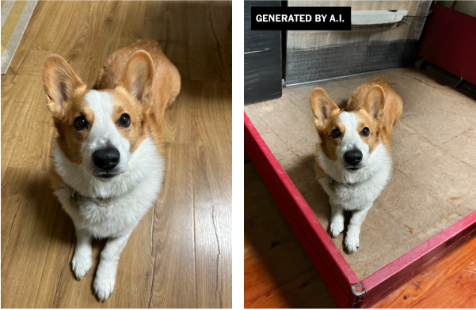The Critical Role of Human Editors in AI Photo Editing

AI-powered photo editing tools are revolutionizing the way we edit photos. These tools can automate many of the repetitive and time-consuming tasks involved in photo editing, such as removing backgrounds from bulk photos, adjusting colors & lighting in images, and adding textures to pictures. This frees up photographers, creative professionals, and other businesses to focus on more critical aspects of their work.
While AI-powered photo editing tools are incredibly efficient, they are not without their limitations. For example, they can struggle with complex or creative edits. This is where a hybrid approach – utilizing AI with human expertise – works better for businesses. Let’s explore the benefits of combining the power of AI photo editing with the skillsets of human editors to achieve optimal results for your business in this post.
Advantages of AI photo editors
AI photo editing tools utilize deep learning algorithms to analyze a large amount of visual data and apply various adjustments automatically. They can reduce image editing workloads for organizations with several remarkable benefits, such as:
1. Reduce editing time
The biggest advantage of AI-driven photo editing tools is that they can edit bulk images in seconds that would otherwise take hours or days for human editors. By automating the repetitive tasks of photo editing, these tools reduce the turnaround time, allowing you to have hundreds or thousands of photographs edited in a day.
2. Save money and resources
While an advanced AI photo editor can be expensive for businesses, it can help them remain cost-efficient in the long run. How? Many photo editing tasks can be automated with AI. This can eliminate the need for hiring and investing in multiple human photo editors for companies. Also, these AI photo editors can be operational 24/7, without any additional cost, providing a major saving for companies that need to process a large volume of images.
3. Can be integrated with your workflow
There are several AI photo editing plugins or APIs that can be integrated with software like Adobe Photoshop, Lightroom, or GIMP. You can determine the specific tasks in your photo editing workflow that could benefit from these AI-powered plugins or APIs. By integrating them into your workflow, you can streamline repetitive image editing tasks and improve overall operational efficiency.
4. Easy & efficient to use
AI photo editors are not only fast, but also extremely easy to use for both amateurs and professionals. They often have intuitive & simple editing controls compared to traditional image editors, which makes it effortless to get the desired results. AI photo editors can automatically identify objects and make necessary adjustments in a single click by learning from the vast amount of labeled data that they have been trained on. This makes the process straightforward and efficient for you.
Evidence of AI adoption in photo editing tools
Due to the ease of usage and efficiently performing cumbersome editing tasks in less time, many popular photo editing tools are integrating AI functionalities. One classic example of this is Adobe Photoshop. The software has integrated AI features through its generative model called Firefly into its existing workflow. This integration lets users edit images through simple instructions. They can add, remove, or replace elements & backgrounds of an image, and even make the picture bigger using prompts.
Similarly, another popular image editing software known as PhotoRoom has recently added a new tool called Magic Studio, which utilizes AI to personalize product pictures for eCommerce sellers and brands. Users can upload their product image files to PhotoRoom and provide prompts describing item types (such as sneakers, and t-shirts) and the settings or backgrounds they require. Based on instructions, the platform will remove and replace the image background, adjust picture settings, and share the generated mockup with users via email, as shown below:

Areas where AI photo editors still require human expertise
Now the main question that arises is “Why do we still need human editors when AI photo editing software can efficiently produce high-quality images for diverse business needs?” This is because there are certain limitations with AI-driven photo editing tools that can be addressed by human editors alone, such as:
1. Custom photo editing requirements
AI photo editors cannot efficiently handle custom image editing requirements owing to limitations in terms of the labeled data that they have been trained on. So, even if the AI photo editor is technically capable of making the changes, it won’t be able to give you the desired results if it fails to understand your intent. This is where professional human photo editors can help. You can communicate your preferences to them, and they will use their image editing skills in combination with the AI tool to ensure that you get the required results
2. Quality control
Human editing experts can better analyze and understand the complex or specific quality parameters of businesses than AI editors. Once human editors have this understanding, they can update the training datasets of AI-driven editing models accordingly and ensure that the edited images meet the quality standards of businesses.
3. Creativity
No machine or technology can match the creativity level of humans. AI photo editors can generate or edit images that are similar to the visual labels they have been trained on. Human photo editors, on the other hand, have a much wider range of visual experiences to draw from, which gives them an enhanced ability to be creative. Instead of following basic instructions, human photo editing experts use their innovative ideas and creativity to enhance the overall visual appeal of images.
4. Complex retouching or manipulation

While AI image editors are good for creating artistic pictures, there are some advanced photo retouching or manipulation tasks they struggle to perform with perfection, such as removing complex objects from images, seamlessly merging multiple elements, and retouching skin naturally in portrait photography. These tasks require precise and subtle adjustments, which can be achieved better with the intervention of professional human photo editors.
5. Data security & privacy
When it comes to data security and privacy, businesses cannot rely solely on AI photo editors. Despite being secure, these tools are prone to data breaches and cyber-attacks, exposing your sensitive information for misuse, as there is no agreement signed for data confidentiality. Involving humans in the image editing process can safeguard your information. Human editors can incorporate robust security measures, including authorized access and adherence to NDAs (non-disclosure agreements), for the ethical use of images.
6. Understanding context and intent
AI photo editors may not be able to understand the context and intent behind an editing request. To edit an image in a way a person or brand desires, it is critical to understand the perspective of both the photographer and the brand. Human image editing experts can better understand the photographer’s intent behind a clicked picture and edit it accordingly to meet the specific guidelines or goals of a brand.
Key Takeaway
While AI brings efficiency to the image editing process through automation, human editing adds perfection and an artistic touch. To maintain the balance between efficiency and creativity, implementing a hybrid approach is a wise option for businesses. For quick adjustments in images or bulk photo editing, businesses can rely on AI photo editors. However, for precise and subtle adjustments in images or advanced photo retouching, it is better to employ professional human photo editors in combination with the use of AI tools. For businesses wherein the need for image enhancement does not stand at the core, outsourcing photo editing services to a reliable third-party provider, who can utilize both AI and human expertise for desired outcomes, appears to be the most viable solution.









